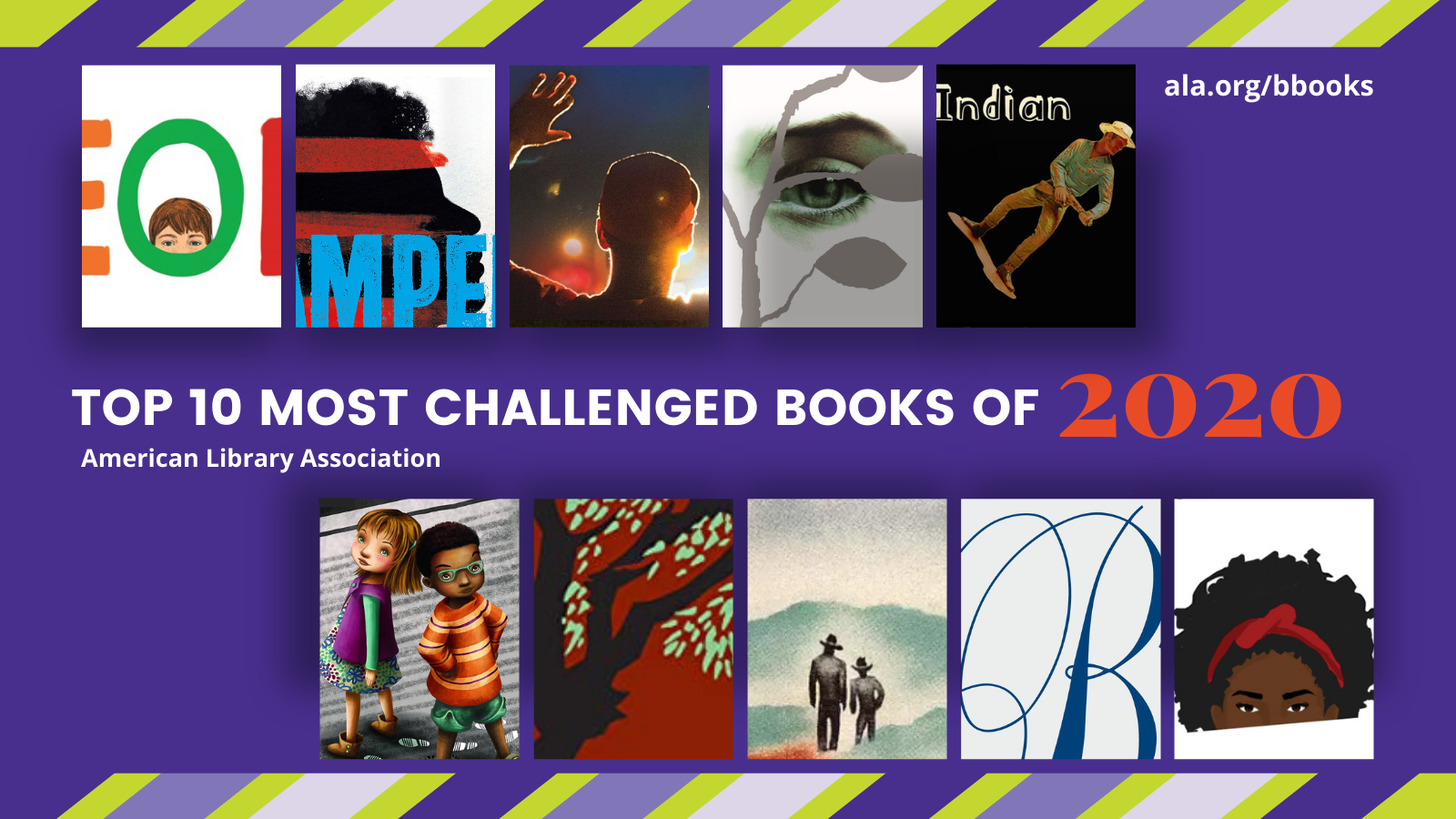It’s Banned Books Week! Established by the American Library Association (ALA), Banned Books Week highlights the ongoing danger of censorship, particularly in our schools. Censorship has, sadly, been alive and well throughout the country over the last year. Here’s the ALA list of the ten most frequent targets of censorship in 2020 (followed by my comments):
- George by Alex Gino
Reasons: Challenged, banned, and restricted for LGBTQIA+ content, conflicting with a religious viewpoint, and not reflecting “the values of our community” - Stamped: Racism, Antiracism, and You by Ibram X. Kendi and Jason Reynolds
Reasons: Banned and challenged because of author’s public statements, and because of claims that the book contains “selective storytelling incidents” and does not encompass racism against all people - All American Boys by Jason Reynolds and Brendan Kiely
Reasons: Banned and challenged for profanity, drug use, and alcoholism, and because it was thought to promote anti-police views, contain divisive topics, and be “too much of a sensitive matter right now” - Speak by Laurie Halse Anderson
Reasons: Banned, challenged, and restricted because it was thought to contain a political viewpoint and it was claimed to be biased against male students, and for the novel’s inclusion of rape and profanity - The Absolutely True Diary of a Part-Time Indian by Sherman Alexie
Reasons: Banned and challenged for profanity, sexual references, and allegations of sexual misconduct by the author - Something Happened in Our Town: A Child’s Story About Racial Injustice by Marianne Celano, Marietta Collins, and Ann Hazzard, illustrated by Jennifer Zivoin
Reasons: Challenged for “divisive language” and because it was thought to promote anti-police views - To Kill a Mockingbird by Harper Lee
Reasons: Banned and challenged for racial slurs and their negative effect on students, featuring a “white savior” character, and its perception of the Black experience - Of Mice and Men by John Steinbeck
Reasons: Banned and challenged for racial slurs and racist stereotypes, and their negative effect on students - The Bluest Eye by Toni Morrison
Reasons: Banned and challenged because it was considered sexually explicit and depicts child sexual abuse - The Hate U Give by Angie Thomas
Reasons: Challenged for profanity, and it was thought to promote an anti-police message
I see two important patterns in this list. First, the majority of these books are for kids or young adults. Why do some parents believe they should have the right to censor what other kids read? Second, the majority of these books have been censorship targets because they touch on racial issues in some way. My own view is that we should be focused on confronting racial issues, rather than banning books about them. I also find it telling that the top 10 most censored books just four years ago didn’t contain a single title challenged on the basis of race. Something has clearly changed.
As for the 2020 list, I’ve read five of these ten books myself (#s 4, 5, 7, 8, and 10). How about you?
